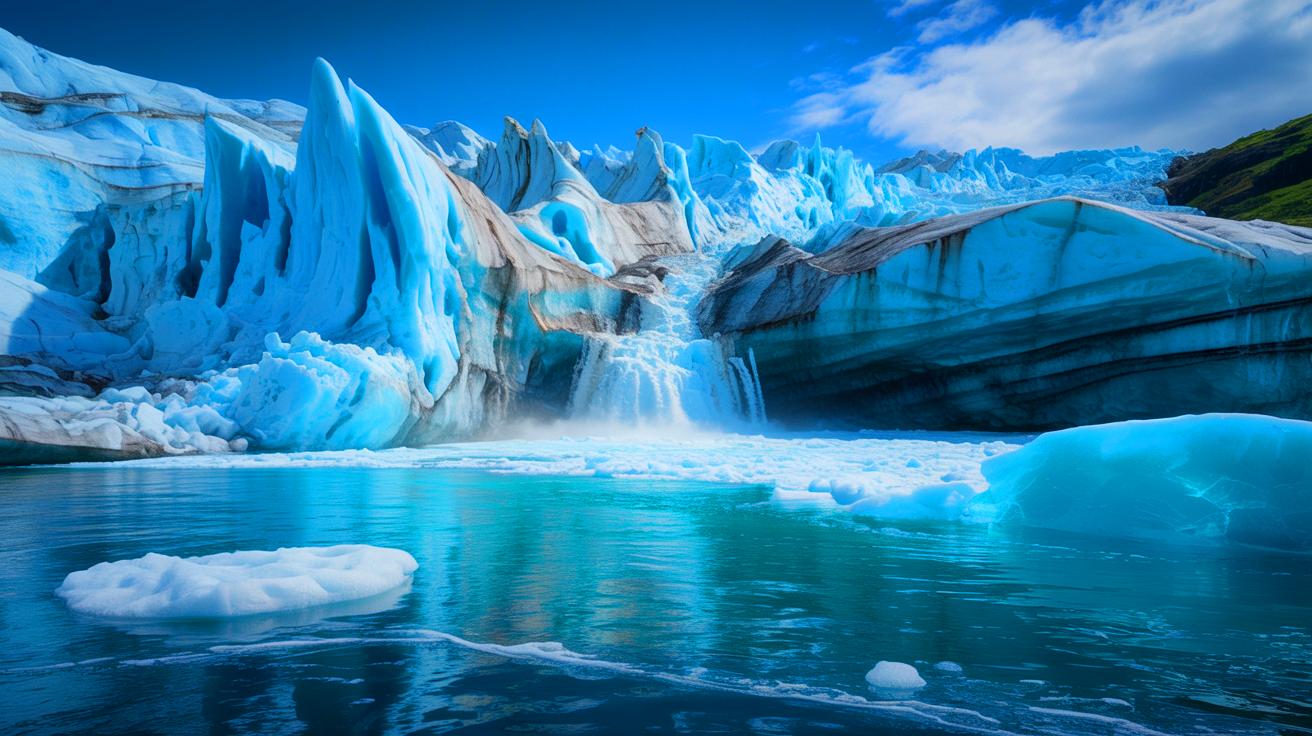IN A NUTSHELL
🌍 Global Glacier Melting is accelerating, contributing to rising sea levels and coastal erosion worldwide.
📅 The International Year of Glacier Preservation in 2025 emphasizes the urgent need for global awareness and action.
🚨 A recent disaster in Switzerland highlights the risks of glacier collapse and potential mountain tsunamis.
💧 The loss of glaciers significantly impacts freshwater resources, exacerbating the global water crisis.
The plight of the world’s glaciers is becoming increasingly alarming. As they continue to melt and collapse with regular occurrence, the urgency for global awareness and action has never been greater. A recent infographic has highlighted the critical process of glacier formation and their eventual flow into oceans. Notably, a recent catastrophe in Switzerland underscored the significant risks associated with glacier loss. This article explores the dramatic implications of glacier melting, the startling facts, and the urgent need for preservation efforts.
Massive Glacier Volume Loss in Recent Decades
The year 2025 has been declared the International Year of Glacier Preservation, a significant decision by the United Nations General Assembly in 2021. This initiative includes the establishment of World Glacier Day on March 21, starting this year. An international conference on glacier preservation is also scheduled from May 29 to 31, 2025, in Dushanbe, Tajikistan. The publication, Courrier International, recently shared an infographic that reminds us of the glacier formation process and their eventual flow into seas and oceans.
In 2025, the global community is urged to recognize the dire situation of glaciers, especially in Antarctica and Greenland, where they are melting faster than they can reform. In the span of just two decades, from 2002 to 2022, there was a loss of 14,557 cubic kilometers of glacier volume, equivalent to 150 times the volume of Lake Geneva. This rapid melting contributes significantly to the rising global sea levels and coastal erosion, posing a severe threat to coastal inhabitants. Furthermore, the vast amount of fresh water being lost into the oceans is alarming, especially at a time when the global water crisis is becoming increasingly urgent.
The Threat of Glacier Disappearance and Disasters
Several data points fuel the fear surrounding glaciers. In 2022, UNESCO reported that approximately 18,600 glaciers, located across fifty sites worldwide, might disappear by 2050. In 2024, Venezuela became the first country in the world to lose all its glaciers entirely. Despite commitments made during various COP meetings, greenhouse gas emissions continue to rise, making the protection of glaciers a top priority.
Moreover, a recent disaster highlighted another type of risk. On May 28, 2025, the Birch Glacier in Switzerland collapsed, nearly destroying the village of Blatten below, forming an artificial lake. Many observers described this as the realization of the “worst-case scenario,” serving as a “frightening warning.” This incident could herald the beginning of future mountain tsunamis in mountain ranges like the Alps and the Himalayas.
Unprecedented Challenges for Water Resources
The accelerated melting of glaciers is not just an environmental concern; it is a humanitarian one. The vast amount of freshwater that glaciers hold is crucial for many communities worldwide, serving as a vital water resource. With glaciers disappearing, the availability of freshwater is becoming more precarious, exacerbating the global water crisis. This loss is especially critical in regions where glacier meltwater is a primary source of drinking water and irrigation.
A simple table illustrates the potential impact of glacier melting on water resources:
Region
Glacier Water Dependence
Potential Impact
Andes
High
Water scarcity, agricultural challenges
Himalayas
Very High
Severe water shortages, increased drought risk
Rocky Mountains
Moderate
Reduced water supply for cities and agriculture
The Urgent Need for Global Action
The current trajectory of glacier melting demands immediate global attention and action. This is not only a call for environmental preservation but also a call for safeguarding human livelihoods and ecosystems. The International Year of Glacier Preservation provides a platform for raising awareness and fostering international cooperation to address the challenges posed by glacier melting.
The world must come together to implement strategies that reduce greenhouse gas emissions, promote sustainable practices, and invest in adaptation measures to protect vulnerable communities and the ecosystems that depend on glaciers. As we move forward, the question remains: How will the global community respond to the impending crisis of glacier loss, and what steps will be taken to ensure a sustainable future for generations to come?
Our author used artificial intelligence to enhance this article.
Did you like it? 4.6/5 (22)
